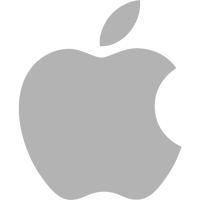Do you have a question about the Apple Desktop Computer and is the answer not in the manual?
Details the arrangement of information into five chapters within the developer note.
Lists technotes and web resources for further technical information on various components.
Details three technotes providing an introduction to Open Firmware on the Macintosh platform.
Summarizes the key features of the iMac computer, with details provided in later chapters.
Describes the two-tone plastic case, built-in handle, and external design of the iMac.
Addresses potential compatibility problems with applications and peripheral devices.
Details requirements for SO-DIMMs used for main RAM expansion, emphasizing SDRAM devices.
Details the components of the processor module: G3 microprocessor, cache, memory controller, and ROM.
Details the Grackle IC (MPC106) acting as bus bridge and memory controller.
Explains the Paddington IC, an integrated I/O controller and DMA engine.
Details the graphics controller ASIC, SGRAM, and acceleration capabilities.
Details the iMac's two USB ports for connecting keyboards, mice, and other devices.
Discusses compatibility challenges between USB and earlier ADB/serial ports.
Describes the USB keyboard's design, bus-powered hub capability, and power button function.
Explains the internal hard disk drive using the extended IDE (ATA) interface.
Explains the 16-bit stereo audio circuitry for high-quality sound input and output.
Describes the built-in 10/100 Mbps Ethernet port and its RJ-45 connector.
Explains how to open the computer and remove the logic board assembly to access slots.
Details the iMac's two RAM expansion slots for SO-DIMMs using SDRAM devices.
Specifies requirements for SDRAM devices: speed, CAS latency, and burst length.
Details expanding video RAM up to 6 MB with SGRAM SO-DIMMs for better color depth.
Explains the shift from monolithic ROM to ROM-in-RAM for flexibility and faster releases.
Details changes in hardware-specific code, ToolBox ROM image in RAM, and startup process.
Lists features like POST, Open Firmware, RTAS, and drivers in the NewWorld architecture.
Confirms ROM-in-RAM approach is compatible with applications and system software.
Details the Boot ROM's functions: startup, hardware init, device tree, RTAS, and OS control.
Describes Open Firmware 3.0 features: block device access, device tree, and interrupt tree.
Provides a high-level view of the execution path during a NewWorld computer boot.
Defines standard units of measure used throughout the developer note.
Lists abbreviations for technical terms, standards, and components.
Details the arrangement of information into five chapters within the developer note.
Lists technotes and web resources for further technical information on various components.
Details three technotes providing an introduction to Open Firmware on the Macintosh platform.
Summarizes the key features of the iMac computer, with details provided in later chapters.
Describes the two-tone plastic case, built-in handle, and external design of the iMac.
Addresses potential compatibility problems with applications and peripheral devices.
Details requirements for SO-DIMMs used for main RAM expansion, emphasizing SDRAM devices.
Details the components of the processor module: G3 microprocessor, cache, memory controller, and ROM.
Details the Grackle IC (MPC106) acting as bus bridge and memory controller.
Explains the Paddington IC, an integrated I/O controller and DMA engine.
Details the graphics controller ASIC, SGRAM, and acceleration capabilities.
Details the iMac's two USB ports for connecting keyboards, mice, and other devices.
Discusses compatibility challenges between USB and earlier ADB/serial ports.
Describes the USB keyboard's design, bus-powered hub capability, and power button function.
Explains the internal hard disk drive using the extended IDE (ATA) interface.
Explains the 16-bit stereo audio circuitry for high-quality sound input and output.
Describes the built-in 10/100 Mbps Ethernet port and its RJ-45 connector.
Explains how to open the computer and remove the logic board assembly to access slots.
Details the iMac's two RAM expansion slots for SO-DIMMs using SDRAM devices.
Specifies requirements for SDRAM devices: speed, CAS latency, and burst length.
Details expanding video RAM up to 6 MB with SGRAM SO-DIMMs for better color depth.
Explains the shift from monolithic ROM to ROM-in-RAM for flexibility and faster releases.
Details changes in hardware-specific code, ToolBox ROM image in RAM, and startup process.
Lists features like POST, Open Firmware, RTAS, and drivers in the NewWorld architecture.
Confirms ROM-in-RAM approach is compatible with applications and system software.
Details the Boot ROM's functions: startup, hardware init, device tree, RTAS, and OS control.
Describes Open Firmware 3.0 features: block device access, device tree, and interrupt tree.
Provides a high-level view of the execution path during a NewWorld computer boot.
Defines standard units of measure used throughout the developer note.
Lists abbreviations for technical terms, standards, and components.











